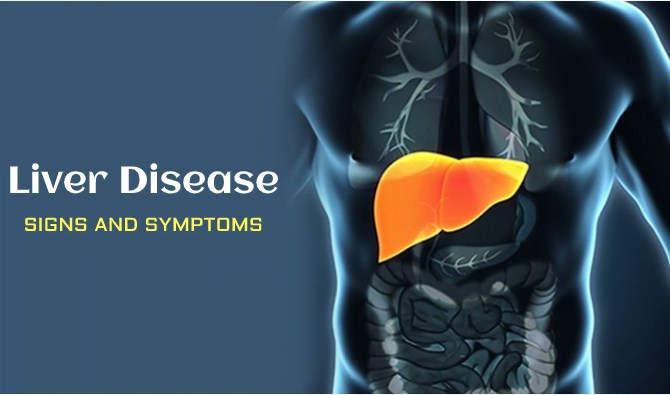Introduction
Due to the presence of nutritional abundance and sedentary lifestyles in recent years, metabolic disorders have emerged rapidly. Various nutritional lifestyle disorders are affecting developing and developed countries and obesity are one of them. Obesity is characterized by excess fat deposition and increased body weight. The root cause of obesity is reduced physical activity, overconsumption of calories, and genetics also play important role in its etiology. In Ayurvedic literature, obesity is co-related with Stholya Roga which is categorized under Santarpan Janya Vikara i.e over nourishment of the body. According to the Father of medicine Acharya Charaka “Stholya” comes under Asht Nindit Mahavyadhi i.e 8 most unwanted diseases. Due to various factors like Sukumara Jeevan (sedentary lifestyle), Atti Bhojan (excessive food intake) results in the derangement of Agni of Meda Dhatu which results in the production of excess fat. Stholya (obesity) is a preventable disorder, that can be managed by changing lifestyle, dietary patterns, and the use of various herbs and formulations.
Facts to know
- According to a recent survey, it was revealed that the world’s maximum the population lives in countries where obesity and overweight kill more people than undernutrition and underweight.
- As per CDC (centers for disease control), as of 2021, the prevalence of
obesity among the United States population is 42.4%. - As per WHO, 2.8 million adults die due to obesity.
- 4th march is observed as World’s obesity day every year.
- Obesity is identified by calculating BMI (body mass index).
- A recent study revealed that variations in this ankyrin-B gene result in an
excessive amount of glucose entering the fat cell, which results in fault-free
obesity. - 23% of heart disorders and 44% of diabetes cases are contributed by obesity.
- The prevalence of obesity increases nearly three times between 1975 and
2016. - Till 2016, 13% of the world’s population is obese involves 15% of
women and 11% of men. - The prevalence of obesity in India is approximately 40.3%.
- As per a recent survey by 2025, India will become second among 184
countries where approximately 17 million obese children are concerned.
As per the survey by 2060, the cost associated with obesity may account for
3.6% of GDP. - Obese women at conception time led to overnutrition and overgrowth of the fetus.
What is BMI?
BMI is known as body mass index, a screening tool used to interpret body fatness that helps to screen weight categories that result in various health problems in people.
How to calculate your BMI?
BMI = Weight in Kilograms divided by square of height in meters i.e. kg/m 2
BMI value – Weight status
Below 18.5 – Underweight
18.5-24.9 – Normal healthy
25.0-29.9 – Overweight
30.0 and Above – Obese
Types of obesity
Depending upon the fat deposition area:
Peripheral: Excess fat accumulates in the thighs, buttocks, and hips.
Central: Excess fat accumulates in the abdominal area.
Combination: Combination of both central and peripheral obesity.
Depending on the association:
Type-1 obesity: It occurs due to excess calorie intake, lack of physical
activity, and does not occur due to any kind of disease.
Type-2 obesity: it contributes to approximately 1% of obesity cases and is
caused by diseases like PCOD, hypothyroidism, Cushing syndrome, etc.
Depending upon the number and size of fat cells:
- Adult type obesity: This type mostly occurs in middle age. In this type, the size of fat cells increases.
- Child type obesity: In this type, the number of fat cells increases since
Childhood and is difficult to treat in compared to adult type obesity.
Obesity Causes (Nidana)
Ayurvedic point of view
- Ati Sampooranat – overconsumption of food
- Guru Madhura Ahara – Intake of food that is sweet and heavy, difficult to digest
- Sheeta Snigdha Ahara – Cool and unctuous (oily/fried) food
- Avyayamaat – lack of physical activity
- Avyavaayaat – If not indulge in sexual intercourse
- Divasvapnaat – Due to excessive day sleeping
- Harsha Nityatvaat – uninterrupted happiness
- Achintana – Negligible mental exercise, absence of thinking
- Beeja Svabhaavaat – Heredity/due to gene deformity or mutation
Modern point of view
- Hereditary
- Inadequate leptin hormone
- Overeating
- Physical inactivity
- Overconsumption of food that is rich in simple carbohydrates
- Sedentary lifestyle
- Physical inactivity
- Certain medications also cause obesity like anti-depressants, anti-convulsant, oral contraceptives, corticosteroids, certain diabetic medications, antihistamines, etc.
- Psychological factors such as stress, anger, anxiety, etc.
- Diseases such as PCOD, insulin resistance, hypothyroidism, etc.
- Social issues
- Sweetened liquid calorie intake
- Pregnancy
- Quitting smoking
- Microbiome
- Lack of sleep
Obesity Symptoms
Ayurvedic point of view
Acharya Charaka “the father of medicine” has mentioned 8 Doshas (unwanted symptoms) of Stholya Purush (obese people)
- Java Uprodha (laziness)
- Ati-Kshudha (increased hunger)
- Ati-Pipasa (increased thirst)
- Ati-Sweda (perspiration)
- Alap Aayu (short lifespan)
- Kricha Vyavaya (difficulty in sex)
- Ati -Nidra (sleepiness)
- Dorbalaya (weakness)
Some other symptoms are seen in obese people
- Ati -Swasa (breathlessness)
- Aayas Ashamata (difficulty to perform heavy work)
- Jadata (sluggishness)
- Alpa Bala (decreased body strength)
- Dorgandhya (bad body odor)
- Gadgada (unclear voice)
Modern point of view
- In obese people, excessive body weight is seen especially around the waist.
- Shortness of breath
- Pain in joints and back
- Trouble during sleeping
- Mild to the extreme level of fatigue
- Various skin disorders due to moisture accumulation in folds of skin like in
thighs, arms, etc. - Snoring
- Various psychological issues like social isolation, negative self-esteem,
depression, etc. - Inability to perform a simple physical task.
- Associated disorders like cardiovascular disorder, diabetes, liver problems,
etc.
Symptoms of childhood obesity
- Early puberty in girls
- Delayed puberty in boys
- Sleep apnea
- Orthopedic problems
- GERD (Gastroesophageal reflux diseases)
- Acanthosis nigricans
- Constipation
- Fatty tissue deposits are especially noticeable in the breast area.
Ayurvedic line of treatment
Shodhana therapy (purification therapy)
- Vamana (emetic therapy)
- Virechana (purgative therapy)
- Lekhan Basti (type of herbs medicated enema therapy)
- Rakta Moksha (bloodletting therapy)
- Swedana (sudation therapy)
Shamana therapy (palliative therapy) – Aptarpana Chikitsa
- Langhana (fasting as per Doshas involved)
- Aama Pachana (use of digestives orally for fat metabolism)
- Ruksha Udvartana (medicated dry powder massage)
- A non-nourishing diet like salad, and Madhu (honey) are advised
- Aatap Sevana (sunlight therapy)
Herbs
- Mustaka (Cyperus rotundas)
- Haridra (Curcuma longa)
- Vacha (Acorus calamus)
- Kustha (Saussurea lappa)
- Daruharidra (Berberis aristata)
- Ativisha (Aconitum heterophyllum)
- Katuki (Picrorrhiza kurroa)
- Chitraka (Plumbago zeylanica)
- Chirbilva (Holoptelea integrifolia)
- Punarnava (Boerhavia diffusa)
- Haritaki (Terminalia chebula)
- Bibhitaki (Terminalia bellarica)
- Aamlaki (Emblica officinalis)
- Shunthi (Zingiber officinalis)
- Marich (Piper nigrum)
- Pippali (Piper longum)
- Arjuna (Terminalia arjuna)
- Guggulu (Commiphora mukul)
- Guduchi (Tinospora cordifolia)
- Vidanga (Embelia ribes)
Pathya and Apathya (Dos and Dont’s)
- Take low-calorie and low-fat food items.
- To avoid food cravings, take the small frequent meal.
- Include warm water for drinking in all seasons.
- Don’t use whole milk instead use skimmed milk.
- Avoid fried food instead include steamed, baked, and boiled vegetables in
your diet. - Include more protein in your diet.
- Avoid excessive salt in meals.
- Avoid high carbohydrate food, sugary food, etc.
- Do more and more exercise, Yoga, and meditation in your diet.
When to see a doctor
If you see the below-given symptoms in yourself then visit your doctor:
- If weight is affecting your emotional health.
- Increase BMI.
Suffering from health problems like Diabetes, high cholesterol, kidney disorder, fatty liver disease, etc.
You must visit your doctor, if not for treatment, then at least for consultation if you are obese or even overweight.
What if obesity is left untreated?
Obesity led to various underlying disorders which become more worsen if obesity is morbid.
Morbid obesity
If the BMI of a person is 40 or more and their weight is more than 100 pounds or 45.35 kg over optimal body weight then the person is considered morbidly obese which is also known as class iii or extreme obesity.
If obesity is left untreated it will lead to the below-given condition:
- Hypertension (High blood pressure)
- High cholesterol level
- Cancer (as per the CDC, 40% of cancer are related to obesity)
- Stroke
- Liver disorder
- Asthma
- Kidney disorders
- Osteoarthritis
- Sleep apnea
- GERD
- Hiatal hernia
Conclusion
In quest of achieving luxury and worldly pleasure, people adopt faulty lifestyles resulting in obesity which is the root cause of various lifestyle disorders like diabetes, stroke, asthma, etc. With few lifestyle modifications, the use of Ayurvedic herbs and formulations like “Cholesto Savior” management of Stholya (obesity) can be done that lead to good quality of life.











[…] Yukti Herbs provide an insightful guide to understanding the root cause of obesity, its symptoms, and natural remedies to manage it effectively. […]